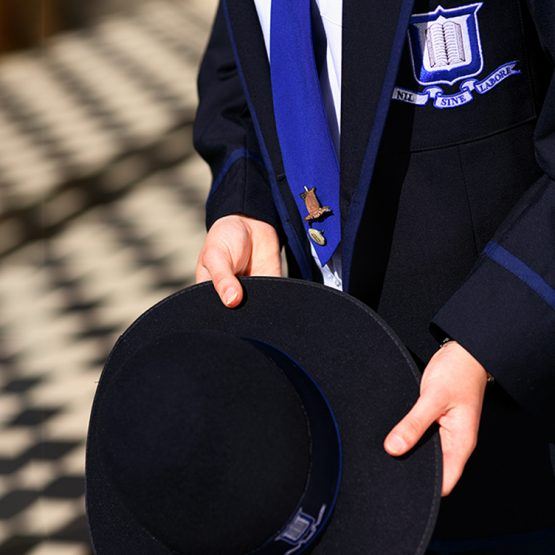Chair of the Board of Trustees, Ms Julie McKay and Principal, Ms Jacinda Euler, were joined by Trustee, Andrew King, CFO, Ms Rachel Fraser, architect Michael Banney, one of m3architecture’s creative minds behind the building’s design, and representatives from our builder Lendlease: CEO–Lendlease Building, Dale Connor; State Manager, Brad Protheroe; and Project Manager, Cherise Czislowski (De Vere, 2002). Very importantly, representatives of the Student Access Group, Tara Bashirzadeh (11R) and Abigail Woodcock (10W) also attended. Tara and Abigail have followed the building’s construction as representatives of all BGGS students—the core reason we are embarking upon this project.
The Science Learning Centre is the School’s largest building project to date. Its sheer size will alter the School’s physical presence dramatically—not unlike the establishment of the Cherrell Hirst Creative Learning Centre in 2007—and yet its most significant impact will undoubtedly be on the education of the girls who learn within it.
A Science building represents a particularly timely investment in the education Grammar girls will need in the future. Historically, as we know, women have been under-represented in Science-related fields. However, our School has proudly countered this trend—from our early heroines in Professor Dorothy Hill (1924), to our Grammar Women pioneering advancements in fields today, such as Professor Cheryl Praeger AM (1965).
With the spread of a pandemic, we have felt tangibly the reality of what life is like in times of true complexity, and unprecedented uncertainty. This demonstrates even more so the value this building represents to Grammar girls—preparing them to know that in the midst of ambiguity, they can help find solutions to the challenges we face.
We know that myriad factors influence a student’s education, but perhaps those most essential—beyond their relationships with their teachers and one another—are the resources they access and the spaces in which they learn. Physical spaces tailored to the needs of students and imbued with a sense of purpose are a cornerstone of a learning environment in which students are free to explore, discover and challenge.
Across its seven levels, the building will introduce students to a host of ‘teachable moments’—through an echo of Einstein’s space-time continuum, hinted through the central void, or through the colour scheme visible on each floor, which represents phases in the lifecycles of stars.
Everything in this building holds interest for our young scientists. The classrooms will support our outstanding teachers in the work they do. Additionally, the sequester spaces on each floor will contain specialised equipment enabling Grammar girls to engage in truly novel research, and extend and refine their practical skills. For our young Biologists, perhaps the incubators will lead them to explore the nuances of life more fully; in Physics, students will become skilled users of the spectroscopy and 3D printers; and in Chemistry, they will harness the power of high-precision balances.
The impact of this space on our girls’ learning is inestimable. We are committed to the education of girls, and believe that their futures as tomorrow’s scientific leaders will begin here.

Chair of the Board of Trustees, Ms Julie McKay

The small ceremony also included Trustee, Andrew King, m3architecture’s Michael Banney, Lendlease Construction Manager and alumna Cherise Czislowski (De Vere, 2002), CEO of Lendlease Building, Dale Connor, and State Manager, Brad Protheroe.

Abigail Woodcock (10W) and Tara Bashirzadeh (11R) at the topping-out ceremony




